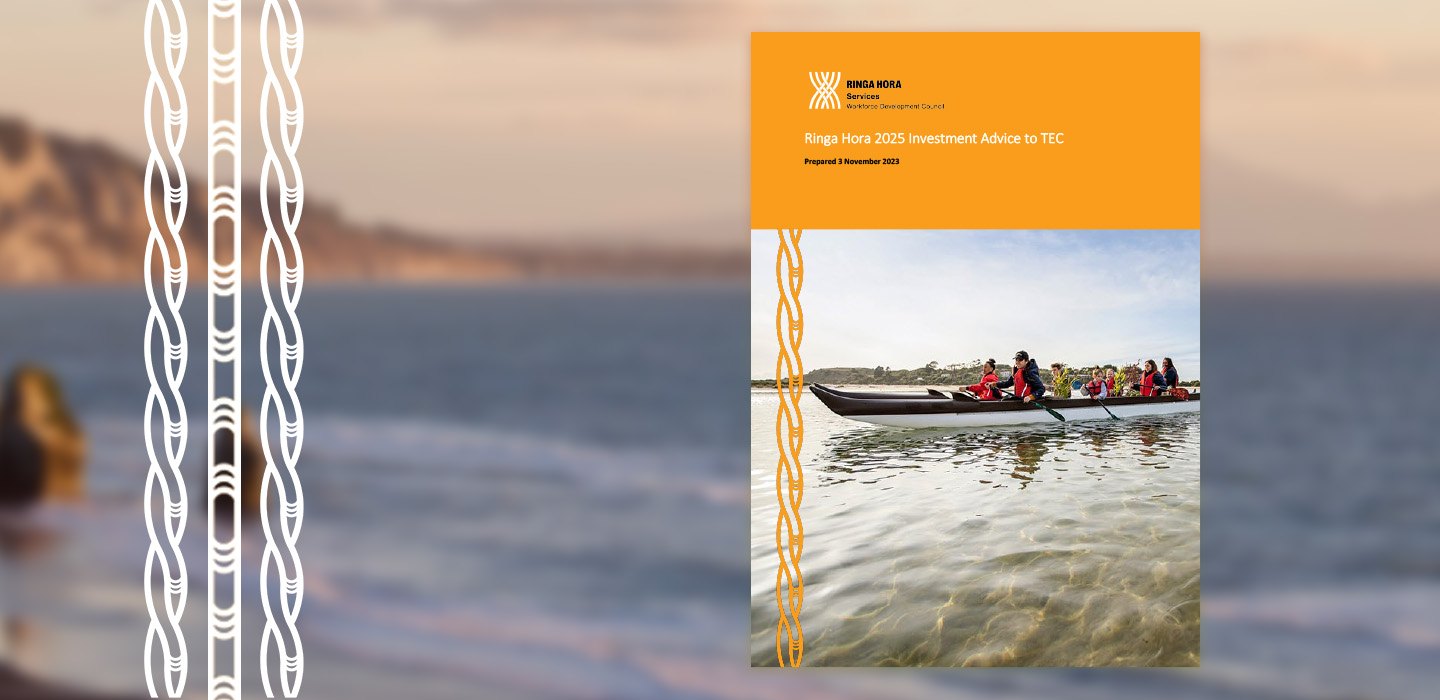 He rau ringaringa e oti ai te mahi. Nāu te rourou, nāku te rourou ka ora ai te iwi.
He rau ringaringa e oti ai te mahi. Nāu te rourou, nāku te rourou ka ora ai te iwi.
The quality of our work is due to the quality of the collective efforts. Our collective contributions will assist our people to thrive.
Ringa Hora is committed to supporting those in the Service sector to upskill and develop, as in doing so, we will be upskilling the future of the New Zealand workforce as a whole. As part of our mandate to help drive transformational change in the vocational education system, we provided investment advice relating to 2025 to the Tertiary Education Commission (TEC) in November 2023.
We considered the following key themes that provide context for our advice
- Shortages of skilled workers remain a key constraint for the Service sector. There is also projected workforce growth across the majority of our industries.
- However, many industries have been recovering from the COVID-19 shock – especially around staff recruitment. This, together with the rising cost of living, has affected the ability of employers to invest in training and skills. Many qualifications have seen a decline in enrolments during this time, especially in hospitality and tourism, as many employers have limited resources (time and funds) to invest in training.
- There are upcoming industry changes (i.e., technological, legislative, and regulatory) which are shaping the industry landscape and influencing the necessary qualifications. These transformative forces have been duly taken into account when formulating recommendations for changes in our qualification standards.
- In addition, there is a need for more leadership, business and management skills and training across all industries, including across all six Workforce Development Councils.
- We also note that Māori, Pacific Peoples, and Tāngata Whaikaha are underrepresented in the more skilled/higher paying roles within the Service sector. Māori and Pacific Peoples also face higher rates of job turnover relative to others. Ringa Hora encourages investment that addresses current gaps and seizes opportunities for these underserved and underrepresented groups.
Constraints of our current TEC advice
We recognise that transforming vocational learning requires more than just an appropriate allocation of investment towards the various qualifications. It requires the alignment of various policy settings such as migration and regulation, which are outsidethe scope of investment advice. It also requires buy in from businesses and learners. We will continue to work with industries toensure the value proposition behind skills investment is clear, while streamlining the process to reduce barriers.
WDCs have a responsibility to advise on mode and scale of provision for all qualifications in our coverage. We have highlighted only a small set of qualifications in this advice as per guidance from TEC. We concentrated on those industries facing significant shortages and where there has been an increase/a projected increase in training uptake. This not in any way implying that there is a reduced need for vocational training investment in qualifications that are not highlighted in this document, nor suggesting there arenoskills shortages in the industries that are not explicitly mentioned in this advice.
For Service Sector qualifications not listed in this advice for an increase or decrease, we believe they should be maintainedattheir current level of investment and provision.
We also acknowledge several service industries, such as retail and real estate, who are facing ongoing uncertainties, and ouroutlook may change from now to 2025 where we will provide TEC with supplementary material when appropriate.
Methodology
In developing our investment advice, we investigated the 112 qualifications administered by Ringa Hora as well as the qualitative and quantitative workforce insights relating to each of the service industry groupings.
For those qualifications where there was evidence of workforce need and a qualification that would meet that need, we used a three-pronged approach to estimate the scale of change that is requested. This is:
- Industries where need is driven by COVID-19 impact on training –for qualifications where training was seriously impacted by COVID-19 but had previously had a level of provision that was basically meeting industry need, we have asked for an increase in provision to pre-COVID-19 levels (either 2019 or 2020, depending on the nature of the qualification and industry).
- Industries where need is driven by employment growth –for qualifications relating to occupations or industries where there is employment growth that is driving demand for increased qualification provision, we have asked for an increase of a similar percentage to forecast occupation or industry employment growth over the next five years.
- Industries where need is driven by an increased uptake of qualifications –for qualifications where we are expecting growth due to increased uptake, for example due to regulatory changes or industry changing their expectations around qualifications, we have drawn on evidence around likely uptake and any existing information about increases already occurring, to calculate a percentage increase.
In cases where more than one of these contexts apply, we have looked at a combined approach. We have also been conservative if there is information indicating different levels of increase needed.
